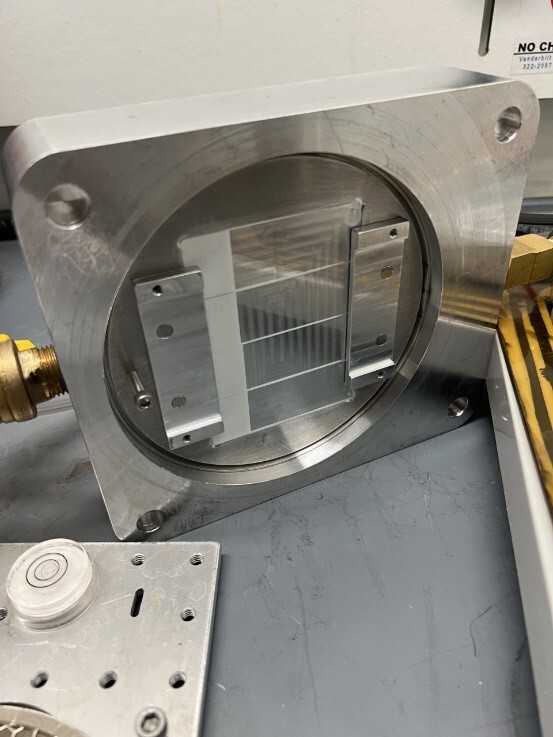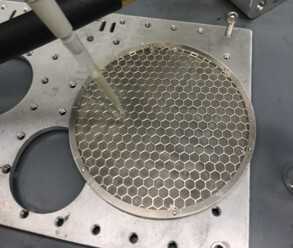Matrix Sublimation via In-House Developed Sublimation Apparatus
Jamie Allen, Jeff Spraggins, Angela R.S. Kruse, Jeffrey D. Messinger, David Anderson, Christine A. Curcio, Martin Dufresne, Katerina V Djambazova, Kevin L. Schey, Richard M. Caprioli
Abstract
Scope:
This protocol describes the use of an in-house developed sublimation device to deposit small molecule matrices onto tissue sections for high resolution MALDI imaging mass spectrometry (IMS). Concentrations will vary based on matrix type.
Steps
Sample Section Preparation
Chill three solutions of 150millimolar (mM) ammonium formate On ice for 30 minutes.
Wash sectioned tissue slides with three separate solutions of 150millimolar (mM) ammonium formate for 0h 0m 45s each.
Dry tissue using a stream of nitrogen gas.
Store in a vacuum desiccator for 0h 20m 0s .
Cold Trap Preparation
Ensure the cold sleeve is at least 2/3 full of ethanol or isopropyl alcohol when trap is fully seated.
Sublimation Apparatus Set up
Ensure that the vacuum line is securely installed between the cold trap and the apparatus lid.
Ensure that the electrical connections between the heater controller and the passthrough in the apparatus base are secure and remain dry.
Place sample slides in the sample holder indentations.
Use copper tape or magnetic holder as needed to secure samples as close to the center of the holder as possible.
Matrix Preparation
Dissolve 5mg of matrix in 2mL of acetone for a total matrix concentration of 2.5mg/mL.
Wait for solvent to dry (0h 3m 0s).
Sublimation Procedure
Place matrix pan on the heat plate in the apparatus base.
Check that mating surfaces of the lid, base, and the O-ring are clean, and carefully seat the O-ring in the groove in the base.
Place apparatus lid on the base, ensure that base is fully seated in the indentions on the induction heater top cover. Start pulling vacuum.
Once it is clear that vacuum is established, ensure that bath drain stopcock is closed. Add a small amount of acetone (20mL) into the well than fill with dry ice and allow to cool for 0h 3m 0s.
Wait for the pressure to fall to < 50 mTorr measured at the pump (usually ~25 mTorr).
Note the pressure at the pump and at the apparatus.
Turn on internal thermocouple.
Turn on induction heater, set heater to 390F temperature setting, and start a Start 0h 10m 0s timer.
Turn off the heater and remove dry ice chips from the ice bath. Replace ice bath with warm water and open to drain excess water. Repeat warm water exchanges until the apparatus is at room temperature.
Turn off the vacuum pump and break vacuum with the leak valve on the vacuum manifold and remove matrix-coated samples.
Clean Up
Clean matrix pan and sample holder with acetone.
Annealing
Place samples on a heating plate (130oC) for 30 seconds.




